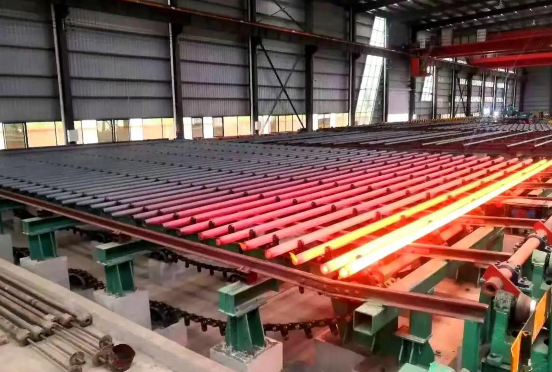
Cold Rolling vs. Hot Rolling:
1) Differences in technology
3. The free torsional stiffness of hot-rolled steel is higher than that of cold-rolled steel, so the torsion resistance of hot-rolled steel is better than that of cold-rolled steel.

2) Differences in advantages and disadvantages
Cold rolling refers to the processing of steel plates or strips into various types of steel through cold working such as cold drawing, cold bending, and cold drawing at room temperature.
Advantages of cold rolling:
Fast forming speed, high output, and no damage to the coating, it can be made into a variety of cross-sectional forms to meet the needs of the conditions of use; cold rolling can cause great plastic deformation of the steel, thereby improving the The yield point of steel.
Hot-rolled seamless pipes are compared with cold-rolled seamless pipes. Cold-rolled seamless pipes are rolled below the recrystallization temperature, while hot-rolled seamless pipes are rolled above the recrystallization temperature.
3. For hot-rolled steel products, it is difficult to control the thickness and side width. We are familiar with thermal expansion and cold contraction. Even if the length and thickness are up to standard at the beginning of hot rolling, there will still be a certain negative difference after cooling. The wider the side width of this negative difference, the thicker the thickness, the more obvious the performance. Therefore, for large steel, the width, thickness, length, angle, and edge of the steel cannot be too precise.
Hot rolling vs. cold rolling: How to choose?
(1) When hot rolling is preferred
Low cost required: Hot rolling is a simple process with low energy consumption and a price 10%-30% lower than cold rolling.
Thick materials: Hot rolling can produce thick plates (3-200mm), while cold rolling is usually ≤5mm.
Structural parts/non-precision applications: such as building steel beams, ship decks, pipelines, etc.
High toughness required: such as bridges, pressure vessels and other impact-resistant scenes.
(2) When cold rolling is preferred
High surface quality requirements: such as car shells, home appliance panels, and precision instruments.
Thin plate requirements (<3mm): Cold rolling can produce ultra-thin plates (thinnest 0.1mm).
High strength + formability: such as automotive structural parts (deep drawing is required).
Strict dimensional tolerances: such as electronic component brackets and precision mechanical parts.
Cost and delivery considerations:
Hot rolling: short production cycle (direct rolling), suitable for large-volume orders.
Cold rolling: requires multiple processes (pickling, rolling, annealing), delivery time is extended by 20%-50%, and the cost is higher.
Conclusion:
Choose hot rolling: low cost, thick plates, impact-resistant structural parts.
Choose cold rolling: high precision, thin plates, high surface requirements or deep processing.
Mixed use: Some industries use hot-rolled billets first, and then cold-rolled for finishing (such as automotive steel plates).
Go here to learn more about " Cold Drawn Seamless Tubing"
